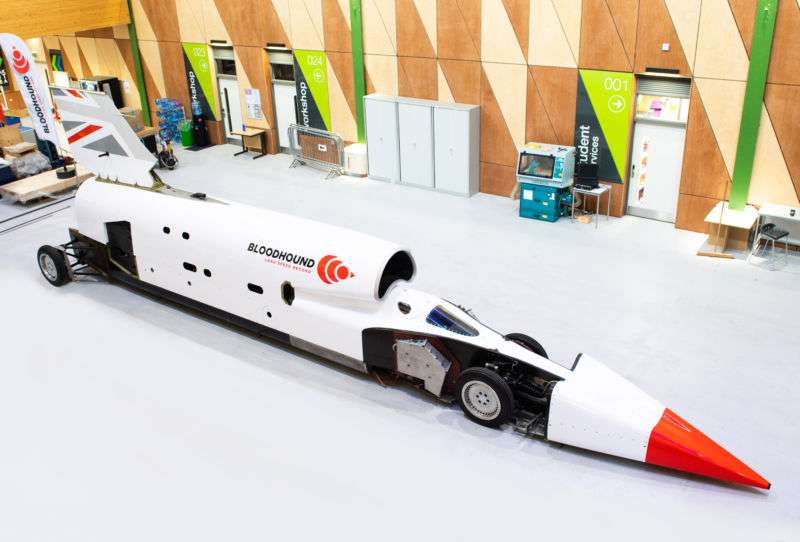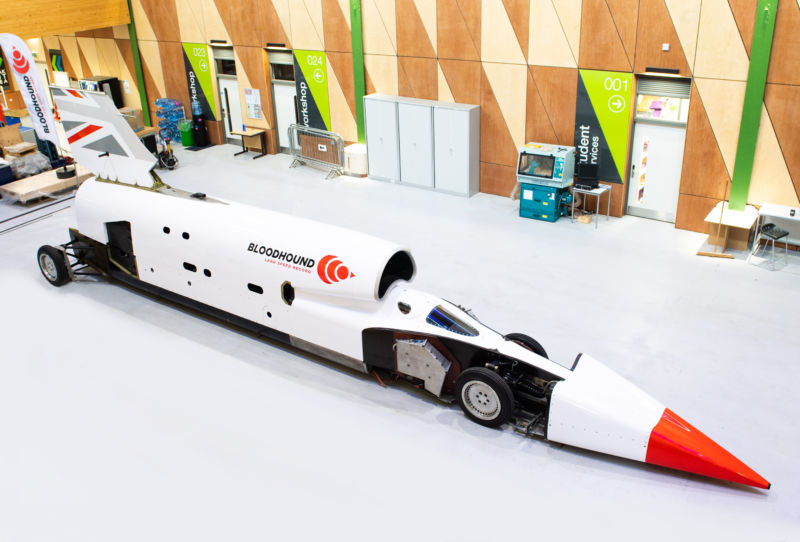
Bloodhound LSR, the 1,000mph car, starts high-speed tests in October

Enlarge / Bloodhound LSR, wearing the tire-shod wheels it used for low speed testing. For high-speed runs, the car will use solid metal wheels instead. (credit: Bloodhound)
On Tuesday, we have some rare good news from England. Bloodhound LSR, the land-speed-record car designed to reach 1,000mph, will finally get to travel to South Africa to begin high-speed testing. Until now, the rocket- and jet-powered machine had only been able to test at low speed—if 210mph (338km/h) can be considered low speed—on a runway in the United Kingdom. But in October, the team will take it to a specially prepared stretch of the Hakskeen Pan in South Africa and begin to stretch Bloodhound’s legs.
It has been quite an up-and-down ride for the land-speed effort. The project was started by Richard Noble, who set a land-speed record in 1982 with Thrust 2 and then spearheaded the Thrust SSC car that broke that record (and the sound barrier on land) in 1997 with RAF Wing Commander Andy Green behind the wheel. The Bloodhound is equipped with a Rolls-Royce EJ200 jet engine (from a Eurofighter Typhoon) and a hybrid (solid-fuel, H2O2 oxidizer) rocket from Nammo that together will provide more than 47,000lbf (20,900kN). Together, they will power the car to speeds normally reserved for aircraft (and the occasional rocket sled).
But land-speed records aren’t easy. Not only do you need to design and build a car capable of that speed, you also have to find somewhere suitable to run it. The place that the team chose—as detailed in our earlier feature on the effort—is located in a dry lakebed in the Kalahari Desert in South Africa’s Northern Cape Province, near the border with Namibia. More than 300 local volunteers helped prep part of the Hakskeen Pan, clearing 37 million pounds (16,500 tonnes) of rocks from an 8.5-square-mile (22km2) stretch to create a suitable track.
Read 3 remaining paragraphs | Comments




